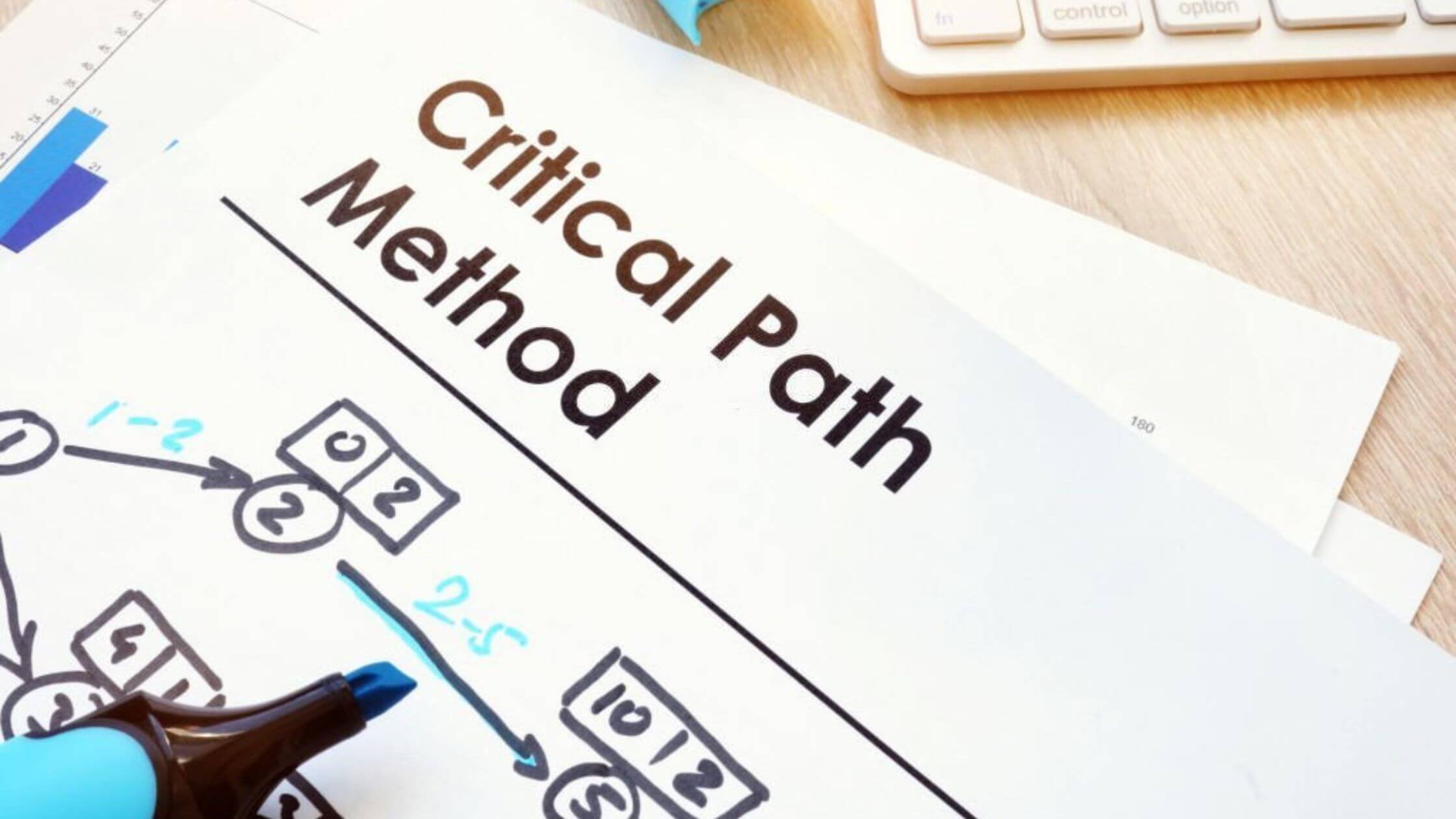

Project management involves various tasks, activities, and dependencies that need to be carefully managed to ensure successful project completion. One essential concept in project management is the critical path, which helps determine the shortest duration to complete a project. In this article, we will delve into the topic of calculating the critical path and explore its significance in project management.
What is the Critical Path?
The critical path is a sequence of activities in a project that determines the longest duration required to complete the project. It represents the path of activities that, if delayed, would delay the overall project completion. By identifying the critical path, project managers can focus on these critical activities to ensure timely project delivery.
Calculating the Critical Path
The critical path is determined through a technique called critical path analysis. This analysis involves the following steps:
- Identify Activities: Break down the project into individual activities or tasks.
- Define Dependencies: Determine the dependencies between the activities, i.e., which activities need to be completed before others can start.
- Estimate Durations: Estimate the duration required for each activity.
- Create a Network Diagram: Represent the activities and their dependencies in a network diagram.
- Calculate Early Start and Finish Times: Calculate the earliest possible start and finish times for each activity based on the dependencies and durations.
- Calculate Late Start and Finish Times: Calculate the latest possible start and finish times for each activity without delaying the project completion.
- Identify the Critical Path: Determine the path of activities with zero slack or float, i.e., activities that, if delayed, would impact the project’s overall duration.
Understanding Float/Slack
While Float or Slack is included in the final critical path analysis, it is calculated prior to finalize the network diagram. It is part of calculating the time of a task, along with any delays that may occur. These project delays in the float are delays that are anticipated so that they won’t cause delays in the overall scope or in the other activities within the project. Three forms of the float can be calculated.
1. Total float projects the total delay that any activity can incur while not impacting the overall project’s end date or other significant landmarks within the project. For example, if a task is added to the project and wasn’t included in the original critical path analysis, it’s inevitable that there will be a delay. However, if that delay can’t be offset, it could throw the whole project off balance. Total float is the ability to see how long of a delay any task or activity might cause without impacting the project’s critical path.
2. Free float projects the delay without impacting activities’ early start dates. Each task works in conjunction with the others, their time frames, and restrictions. Free float works with the time that’s been calculated as the soonest date that a task can begin. It is the amount of time a particular activity can be delayed without impacting the early start date.
3. Project Float is the length of time a task can be delayed without affecting the overall project completion date.
The critical path analysis itself should show no floats once it is finalized. Since the PMP critical path activities project the longest path, activities will not have any floats. Slack can negatively impact the critical path activity and correspondingly cause delays in other tasks and the project as a whole.
Calculating an activities float
By subtracting the early start from the late start, or by subtracting the early finish by the late finish of an activity, you can determine the float. So, how is the early start, finish, late start, and finish calculated?
To calculate early start or early finish you start at the beginning of the activity and work out the projected time frame through to the activity’s completion. Late start and late finish start at the end of the task and back to the start.
In accounting, they often add the numbers up and then subtract them back to zero. If there is a remainder, they do it again because they know they missed something. Float is the same principle. Either way will give you the finish to start a relationship, but it’s wise to complete both and compare to eliminate the chance for error.
Importance of the Critical Path
The critical path plays a vital role in project management due to the following reasons:
- Project Duration: The critical path helps project managers determine the minimum duration required to complete a project successfully. By focusing on the critical activities, they can optimize the project schedule and ensure timely delivery.
- Resource Planning: The critical path helps in resource allocation and planning. By identifying the activities that are crucial for project completion, project managers can allocate resources effectively to prevent bottlenecks and delays.
- Risk Management: The critical path highlights the activities that have the highest impact on the project timeline. By managing and mitigating risks associated with these critical activities, project managers can minimize the overall project risks.
- Project Control: Monitoring the progress of activities on the critical path allows project managers to have better control over the project. They can track the completion of critical activities and take corrective actions if any deviations occur.
PMP Critical Path PMP Method Example with Solution
Now that we have the basics, let’s see how we can calculate the critical path within a project. Going through each activity, we will specify the connection between each of them, show how a network schedule is created, create a network schedule, define the critical path, and determine the slack for two of the activities.
This project has 8 activities. Each of the sample activities shows the duration as well as what other activities they correspond to.
- Activity A’s calculated length is 6 days. It is followed by Activity F.
- Activity B’s calculated length is 5 days. Activity B stands alone.
- Activity C’s calculated length is 8 days. Activity C stands alone.
- Activity D’s calculated length is 4 days. It is followed by Activities E and F.
- Activity E’s calculated length is 8 days. It is followed by Activity G.
- Activity F’s calculated length is 7 days. It is followed by Activity B and G.
- Activity G’s calculated length is 5 days. It is followed by Activity H.
- Activity H’s calculated length is 7 days. It is followed by Activity C.
Using the information above we can calculate the critical path of the project as well as the float of activities E and F.
PMP Critical Path PMP Calculation
Each possible path is put into the network diagram. By drawing the network diagram, defining each activity’s path, and projecting those paths from start to finish, we can determine the longest path for the entire diagram providing us with the PMP critical path. Once we have established the critical path, we will find the respective float of activity E.
The first step is to define the connections of each activity in order to construct the network diagram.
- Activity A is followed immediately by Activity F. Activity A will take 6 days. Drawing the diagram, we should have Activity F following
- Activity A. Then we can specify the finish to start the relationship between F and A.
- Activity B and C are both standalone activities. They have no relationships with other activities. They should be put at the end of the network diagram. Activity B is 6 days and Activity C is 8 days.
- Activity D has two subsequent activities, E and F. Activity D is 4 days.
- Activity E is followed by activity G. Its duration is 8 days.
- Activity F also has two corresponding activities, B and G. Activity F is 7 days.
- Activity G is followed immediately by activity H, and its length is 5 days.
- And Activity H is followed by Activity C, with a length of 7 days.
Now that each of the activities has been defined and we know which activities depend on what other activities, we can construct the network diagram for the project. We can refer back to the list to make sure each relationship is in its proper place from start to finish.
Once your diagram is completed, you can see all of the activities from the very first A until the last one H, how each activity relates to the others, what order they fall within the scope of the project, and how long they will take. This provides you with the longest path and allows you to identify the critical path of the project.
1. In the first path we go from activities D, E, G, H, and end at C. This path’s duration is 33 days in length.
2. The second path follows activities D, F, G, H, and C. This path is 32 days in length.
3. The third path follows activities A, F, G, H, and C. This path is 34 days in length.
4. The fourth and final path follows A, F, and B. The length of this path is 18 days.
The longest path, according to the calculations made above, would be the third path: Activity A, to F, to G, to H, and finally to C. Because it is the longest path, it is the critical path for our network diagram and the project duration is 34 days.
Delays or issues in these activities will have a negative impact for the duration of the project. These tasks are the critical path and have no slack.
We hope this helps you in finding the critical path within your projects. Please reference the PMBOK for additional information.
Sign-up for a 7-day free trial! Try the first two modules of Brain Sensei’s story-based PMP and CAPM Exam Prep courses and a mini practice exam and see how it all works
Conclusion
The critical path is a fundamental concept in project management that helps determine the longest duration required to complete a project. By calculating the critical path and focusing on the critical activities, project managers can ensure timely project completion, effective resource allocation, and better risk management. Understanding and managing the critical path is crucial for successful project delivery.
Have you led projects and are looking to earn a project management certification? You might be interested in learning about how lucrative this can be. Check out these articles.
13 PMP Benefits Once You Get The PMP Certification
No experience leading projects but still want to get into project management? No problem! Check out these articles.
CAPM Certification Eligibility
What is a Certified Project Manager; How do I get PM Certifications


